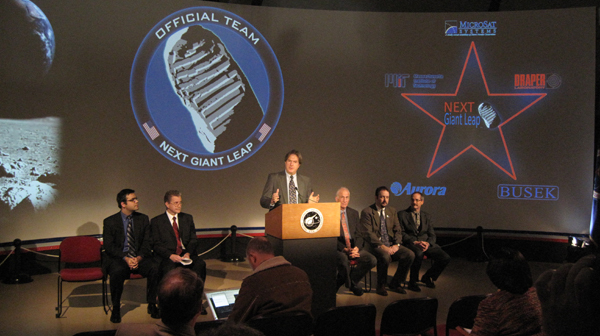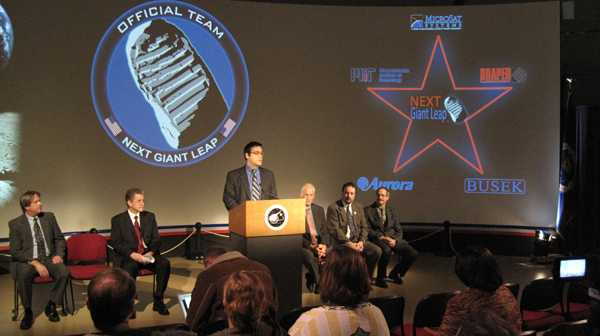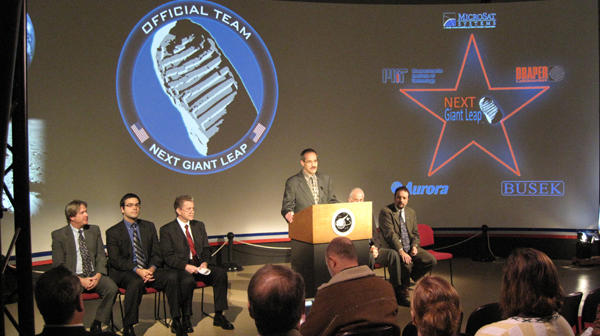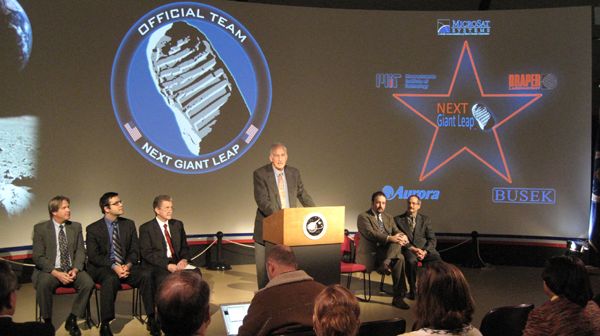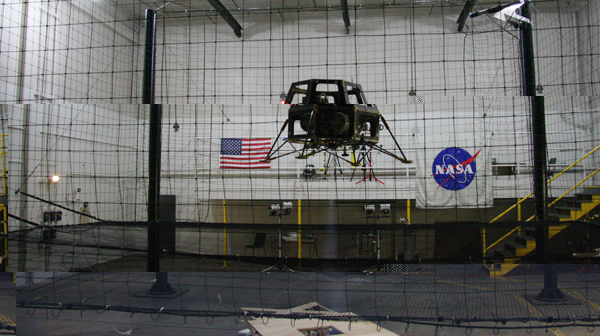This was December 2008 | « November 2008 | Main | January 2009 »
The Future of Human Spaceflight
Posted on Sunday, December 28, 2008
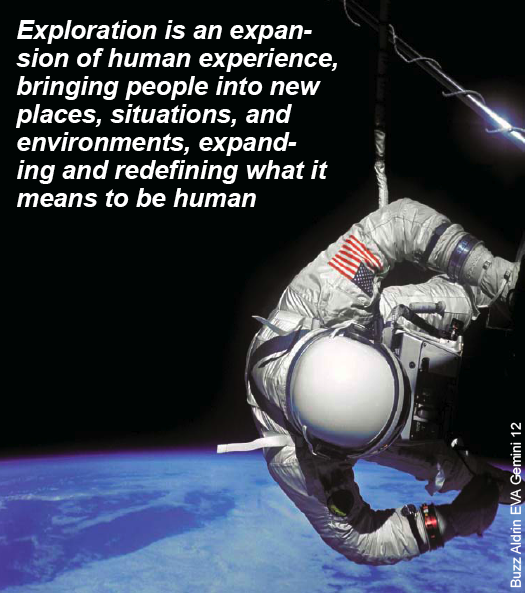
Screendump from report
The title of a white paper recently issued by the 'Space, Policy, and Society Research Group' based at MIT. Some quotes from this (worth reading) 15-page report:
This report addresses the future of human spaceflight, that is physically placing humans in space and on other planetary bodies.
A primary objective of human spaceflight has been, and should be, exploration. Exploration, of course, is a keyword in the Bush vision and in NASA’s own terminology. Yet while the word is often used, it is rarely specified beyond lofty rhetoric and allusions to curiosity and frontiers. What is exploration, and why explore?
First, it is worth considering what exploration is not. Some argue that “exploration is in our DNA,” that some fundamental, even genetic, human trait compels us as individuals and as nations to seek out new territory. The civilization that fails to expand geographically, the argument goes, will enter a state of permanent decline, always to be exceeded by other nations with more compelling wanderlust. We reject these arguments about essential qualities of human nature. No historical evidence, no social science evidence, and no genetic evidence prove that human beings have an innate, universal compulsion to explore. In fact, space exploration is radically different from the kinds of geographical expansion that have marked human history because of its high degree of technical difficulty, the environments’ extreme hostility to human life, and the total lack of encounters with other human cultures.
We define exploration as an expansion of the realm of human experience, bringing people into new places, situations, and environments, expanding and redefining what it means to be human.
Space continues to attract broad public interest, although it must compete for attention in an increasingly diverse, overheated, and unstable media environment. Young Americans increasingly see remote and virtual presence as equivalent to physical presence and may not accept older arguments about the importance of “being there.” Exploration in other realms, notably the deep ocean, faces a similar set of questions as engineers, scientists, and policy makers debate the appropriate mix of human and remote presence in our digital world.
Some Numbers from Michael T Jones' talk at AGU '08
Posted on Sunday, December 28, 2008
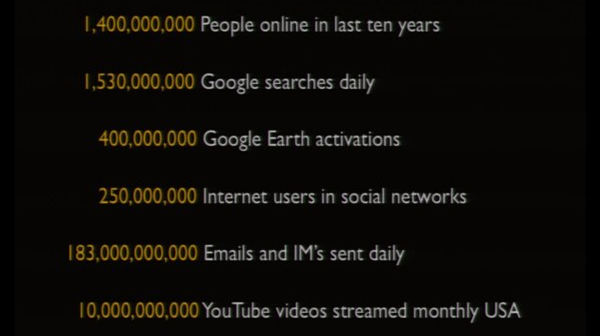
75 sweet minutes of Michael T Jones (Chief Technology Advocate @ Google) at the AGU earlier this month.
Scoble Interviews Tim O'Reilly in Sebastopol
Posted on Saturday, December 27, 2008
Just after he gave an interview on the radio at NPR.
Curb Surfing (today's pitstop #9)
Posted on Saturday, December 20, 2008
A costly sport here in the US. And a lot of curbs. Like this one.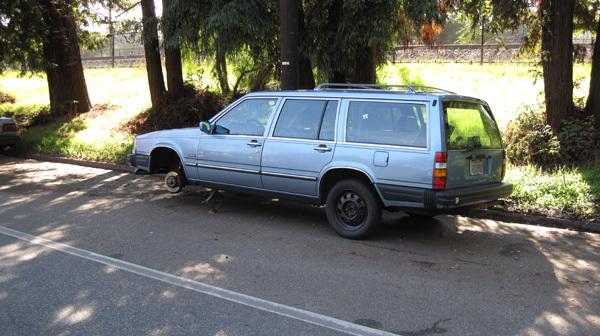

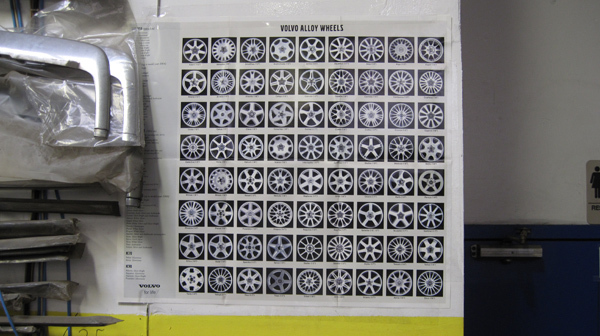

On the Move...
Posted on Friday, December 19, 2008
...Nothing beats having a Drive-Through-ATM when you're on the move...(hoping to run into a drive-through-bathroom soon...)

Silicon Valley is Alive!
Posted on Friday, December 19, 2008
Did I mention Silicon Valley is alive? Its true! When you hang around the bay area (the South Bay that is...), you'll see the airplanes lining up for the landing in SFO or OAK every night of the day. Its one of those views I originally shared with Chris Kemp, CIO of NASA Ames, back in 2006, which made me want to come to the Valley. With the San Mateo Bridge on your left, you'll see a night sky filled with airplanes ligning up to land. Its like living in the future. Its like survival. Its like the human condition in all its splendor: humankind will evolve, whether you like it or not!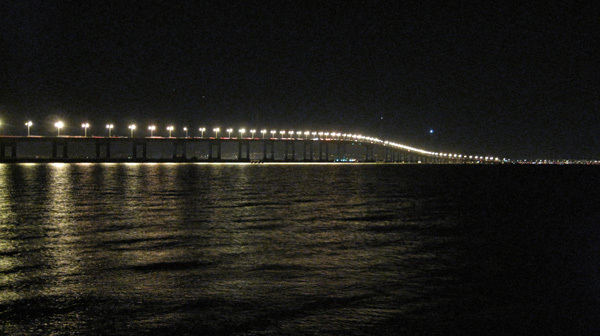
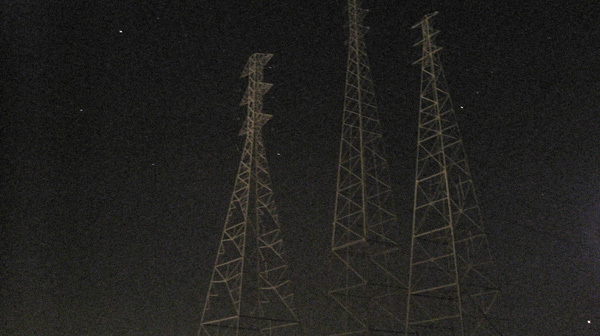
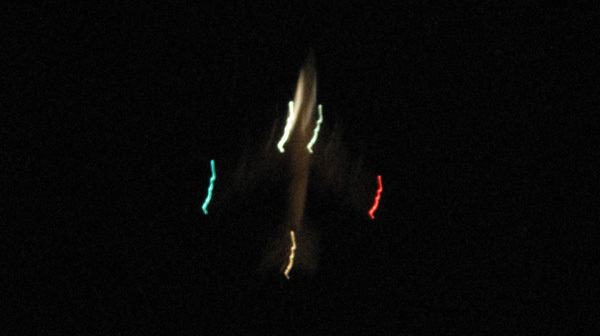
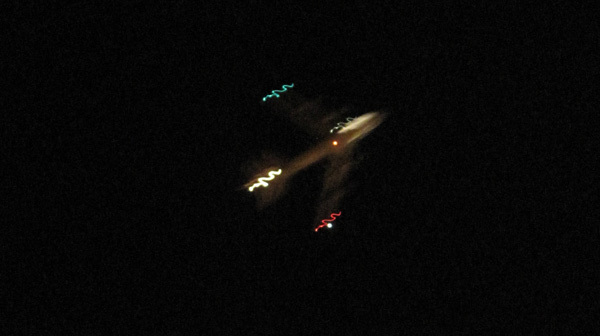
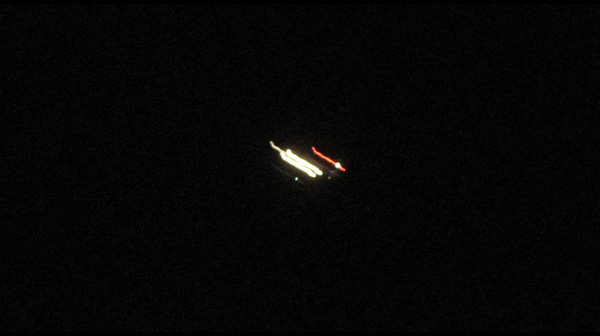
GLXP Mystery Team Reveals Itself at NASA Ames
Posted on Wednesday, December 17, 2008
Earlier this morning, the GLXP Mystery Team revealed its identity here at the NASA Ames Research Center. From top to bottom its Gary Martin (Director of NASA Ames' New Ventures and Communications Directorate [aka Code V]), Will Pomerantz (X PRIZE Senior Director of Space Projects), MSI president John Roth Michael Joyce (Leading the now-not-a-mystery-team-anymore-but-called-Next-Giant-Leap team), and one of my favorite NASA astronauts Jeffrey Hoffman. More on the unveiling at CNET and more on the team's partners at the NGL website.
NASA Tunnels, NASA Humor
Posted on Tuesday, December 16, 2008
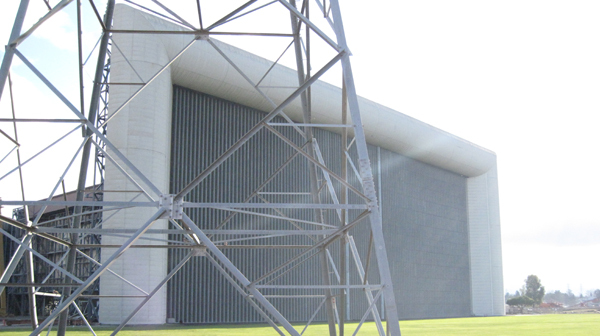
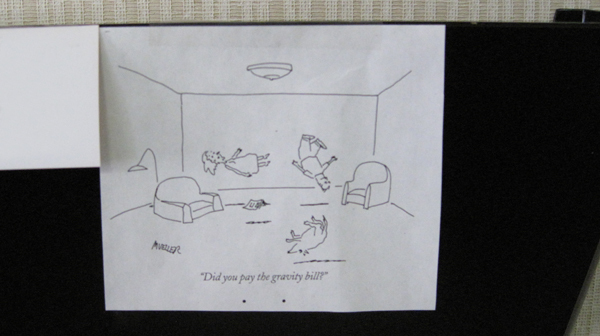
Ps, in case you're wondering whether we actually have an anti-gravity machine here at Ames (like most people think NASA and ESA have somewhere), we don't. In fact, that machine doesn't exist. Or hmm, actually it does, but its called the ISS, and its in Low Earth Orbit. The big inlet you see in above image is part of the large windtunnel here at Ames.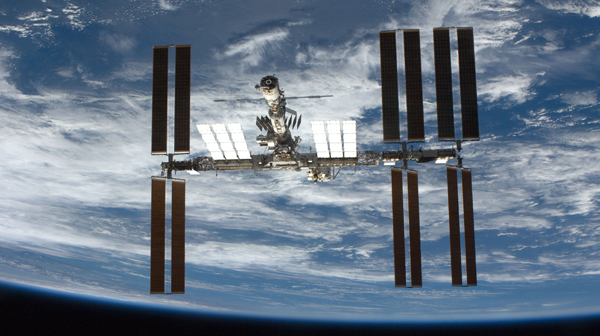
Another Peak Into the Future
Posted on Tuesday, December 9, 2008
Some of the sensors I blogged about in this post will likely come out of the Small Spacecraft Division here at Ames. (Click on the bottom image for a full-res closeup)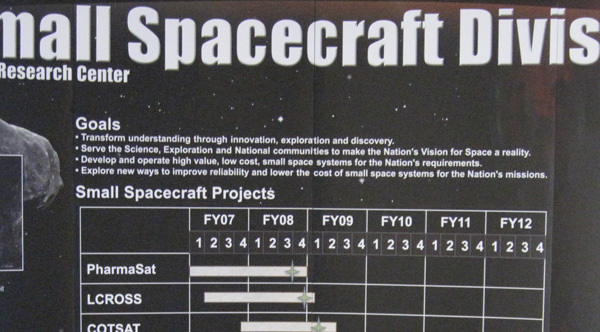
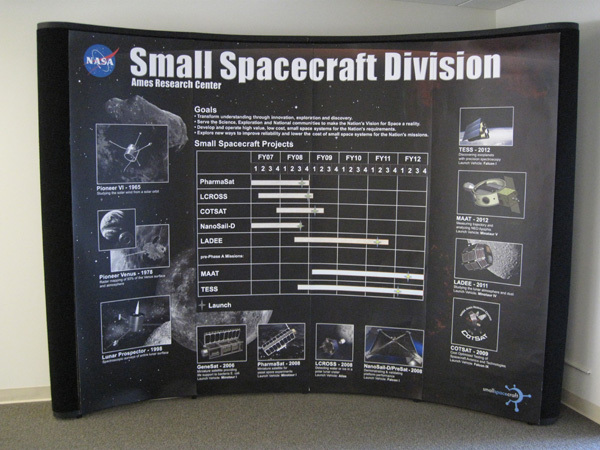
Click for full res version
Sometimes I Do miss Amsterdam...
Posted on Tuesday, December 9, 2008
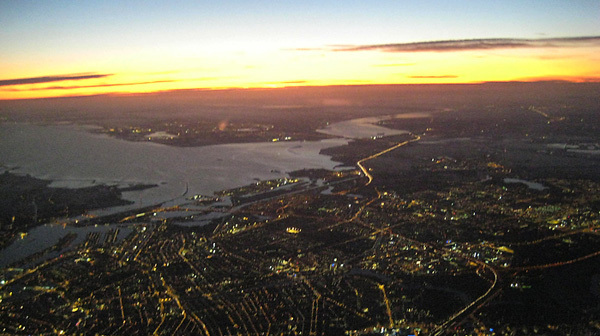
...but then there is always San Francisco, The Getty, Burbank, Pasadena (JPL), San Fernando Valley etc...
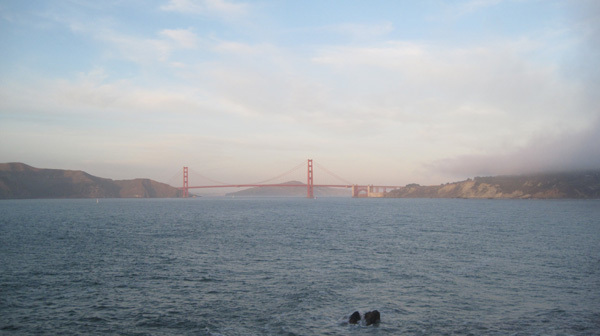
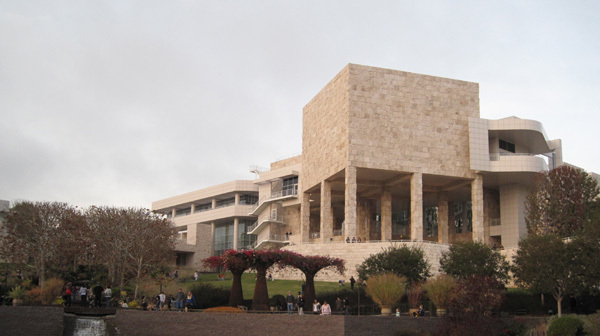

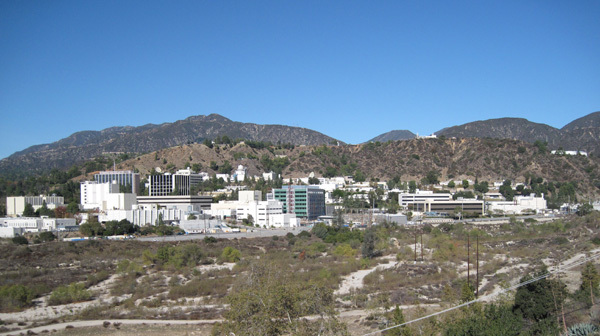

Coming Soon to a Parking Lot Near You
Posted on Friday, December 5, 2008
Quite a hilarious video from Microsoft, embedded below.(via)
Web Meets Out-Of-This-World
Posted on Thursday, December 4, 2008
2 days ago I watched another two 30min. videos from last month's Web2.0 Summit 'Web Meets World'. One an interview with Al Gore, the other one an interview with Michael Pollan. Given this year's theme 'Web Meets World', both interviews revolved around discussions on how best practices and business models from the web and software world could be applied to re-invent and/or re-invigorate other industries 'in the real world': the outdated energy industry in Al's talk, the dysfunctional food industry in Michael's talk.
Reading a book on the Django Web Application Framework last night, I realised this question just as much applies to the space industry. Its something I remember Pete Worden (our current NASA Ames Center Director) being pretty vocal about back in 2006. Teaching at the ISU Summer Session in Strasbourg, he made a strong case for the need for standards to facilitate innovation in the space industry. Standards for the data coming back from space, standards for the telecommunication protocols used in space, standards in launch and operational systems. And since he's been here at NASA Ames, he spearheaded an initiative to implement that kind of modular thinking in the actual physical design of a spacecraft, the Modular Common Spacecraft Bus (image above). Its an ubergizmo-worthy system design that can be used both for orbiter missions as well as for lander missions and that was recently selected by Odyssey Moon as their preferred platform to take a shot at the Google Lunar X-Prize.
I can see down the road a satellite gathering data somewhere in the Solar System is conceptually not that different from say a network of smartphones tied into a sensor network, or a webcam streaming images live on the web. Read for example what the Google Lunar X prize has in its competition guidelines in order to win the Grand Prize:
MOONCAST: The Mooncast consists of digital data that must be collected and transmitted to the Earth composed of the following:
High resolution 360º panoramic photographs taken on the surface of the Moon;
Self portraits of the rover taken on the surface of the Moon;
Near-real time videos showing the craft’s journey along the lunar surface;
High Definition (HD) video;
Transmission of a cached set of data, loaded on the craft before launch (e.g. first email from the Moon).
Teams will be required to send a Mooncast detailing their arrival on the lunar surface, and a second Mooncast that provides imagery and video of their journey roaming the lunar surface. All told, the Mooncasts will represent approximately a Gigabyte of stunning content returned to the Earth.
In the end, its all the same. Input devices (in this case: satellites) feed into the web, the web as platform extracts (collective) intelligence out of this data (if you're lucky), the network delivers the data/media to its users/consumers, and voila: Web Meets Out-Of-This-World. Its already happening (yes, it is). Or as one of my favorite quotes from William Gibson goes:
The Future is here, its just not evenly distributed yet.
We’ve built this spaceship...
Posted on Tuesday, December 2, 2008
...but we really don’t know where it will take us.” The last sentence in this indepth NYT article on Google and privacy concerns.
Sign Of The Times
Posted on Monday, December 1, 2008
Chang'e 1 Lunar Map Released. What a great image! Especially with those Chinese characters above it (the 5th character from the left is the character for the moon according to my American colleague who was born in China). They have even gone through great length to appropriate all large craters with Chinese characters. Click on the image for a high res version (via).
The future is process, not a destination
Bruce Sterling
Everything is ultimately becoming information technology
Ray Kurzweil
Data is the Intel inside
Tim O'Reilly
There is only one machine and the web is its OS
Kevin Kelly
The medium is the message
Marshall McLuhan
